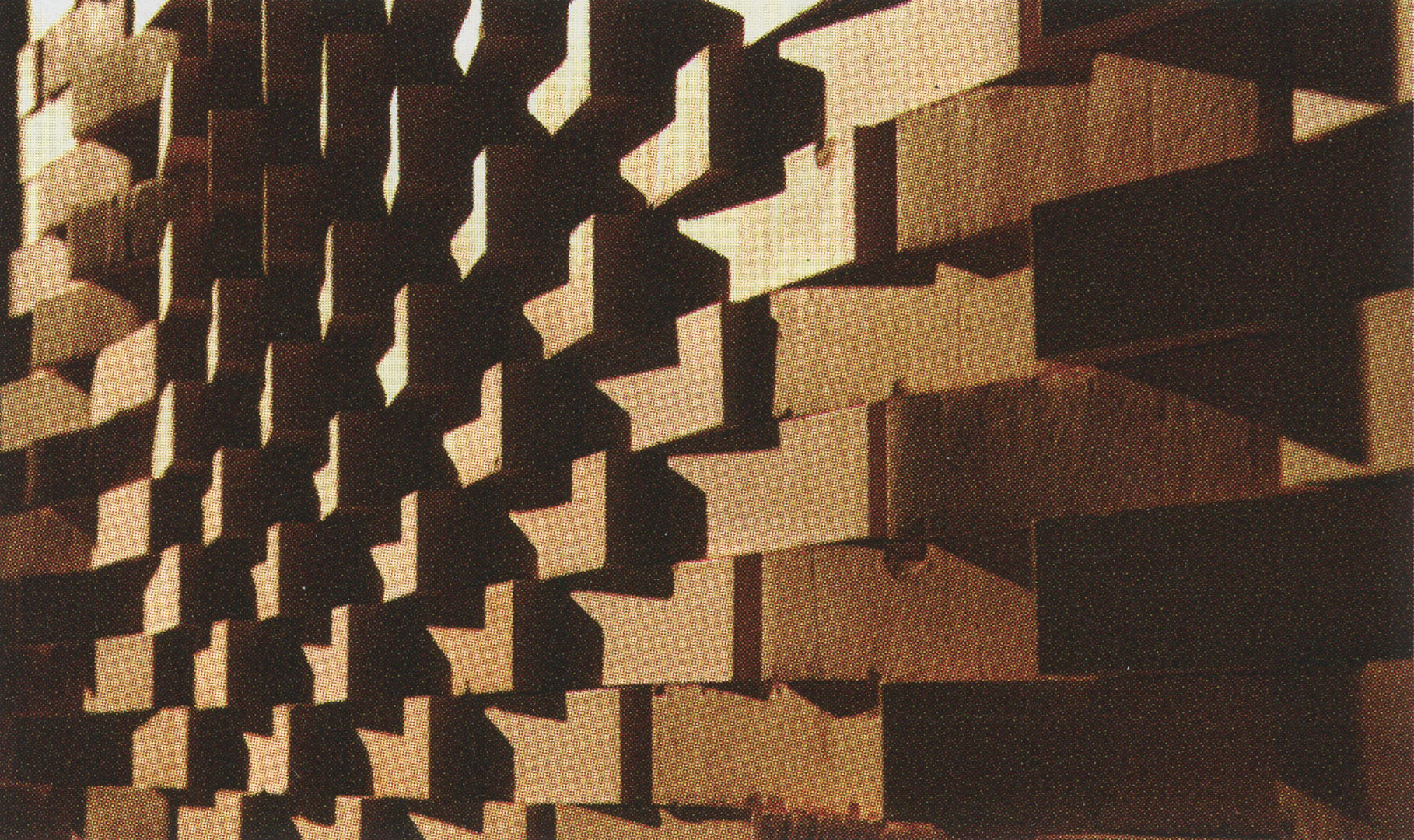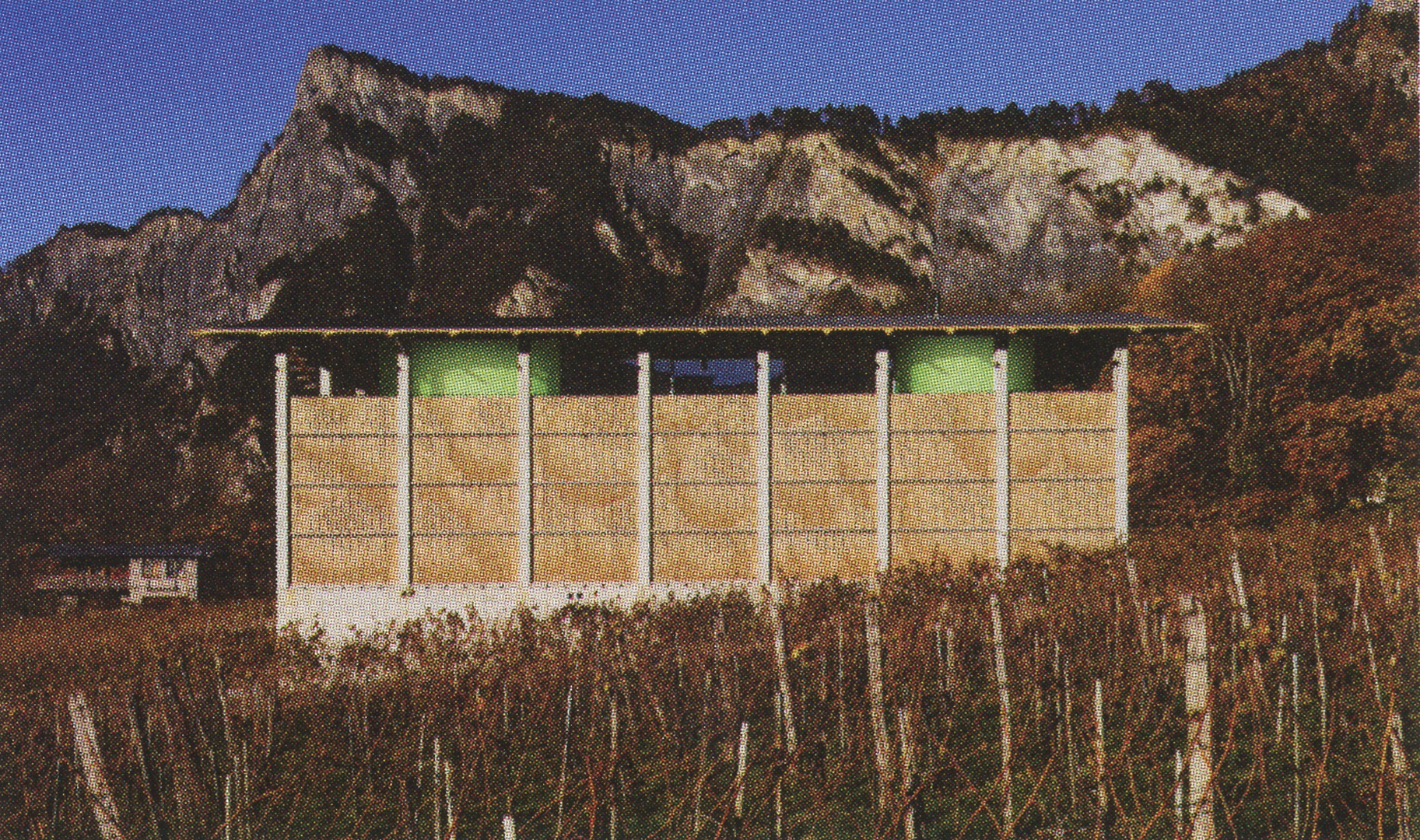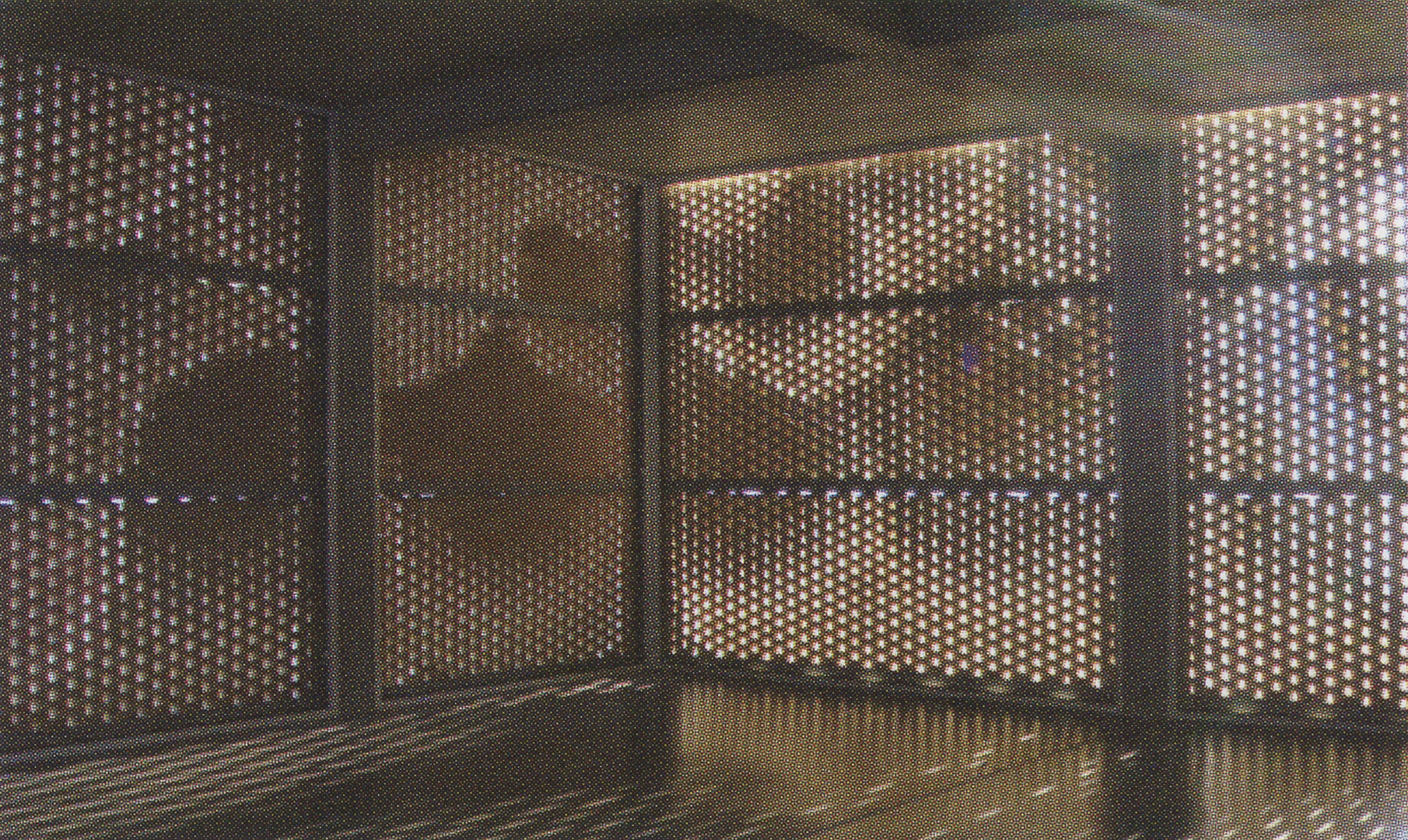Tobias Bonwetsch: Gantenbein Vineyard Façade, Fläsch
Artist(s):
Title:
- Gantenbein Vineyard Façade, Fläsch
Exhibition:
Creation Year:
- 2008
Category:
Artist Statement:
Four hundred square meters of the brick façade on a winery were digitally designed and fabricated to serve as a prototype for this process. The masonry façade functions both as a temperature buffer and as protection from direct sunlight. The robotic construction technology, developed at the ETH Zürich by Gramazio & Kohler, Architecture and Digital Fabrication, lays individual bricks according to programmed parameters, precisely at the desired angle and at exact prescribed intervals. With this new digital production method, each wall was constructed to the desired light and air permeability specifi-cations, while creating a pattern of individually rotated bricks.
The façade is made up of 20,000 bricks. Each individual brick reflects light differently, depending on the angle at which it is set, and thus has different light-diffusion characteristics. Much like pixels on a computer screen, the bricks form a pattern on the façade. In contrast to a two-dimensional screen, however, there is a dramatic play among plasticity, depth, and color, depending on the viewer’s position and the angle of the sun.
At closer view – in contrast to its pictorial effect at a distance – the sensual, textile softness of the walls dissolves into the materiality of the stonework. The observer is surprised that the soft, round forms are actually composed of individual, hard bricks. The façade appears as a solidified dynamic form.
In the interior, the daylight creates a mild, yet luminous atmosphere. The image of the landscape glimmers through the open gaps between the bricks.
To create the façade, the team designed a generative process using the animation software Maya and its embedded scripting language, MEL. The existing concrete-frame construction was interpreted as a basket and filled with abstract balls (representing grapes) that varied in diameter. By digitally simulating gravity, the process simulated balls falling into a virtual container. The digital basket was then viewed from all four sides, and the digital image data were automatically transferred as a rotation of the individual bricks. The joints were left open to create transparency.
In the built result, the visitor sees gigantic, synthetic grapes, as if they were inside the vineyard building. The wall elements were manufactured as part of a pilot project at the robot research facilities at the ETH Zürich, transported by lorry to the construction site, and installed with a crane.
The Gramazio & Kohler team wrote a script for direct postprocessing of the generated design data into robot control language. The robot is directly activated by the design data, and there was no need to produce additional implementation drawings. As a result, the team was able to continue working on the façade up to the very last minute before starting production.
Sponsors:
Architecture Bearth & Deplazes with Gramazio & Kohler
Facade Gramazio & Kohler, Architecture and Digital Fabrication,
ETH Zürich
Partner Keller AG Ziegeleien








